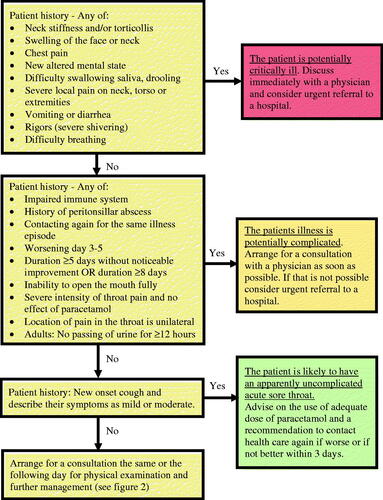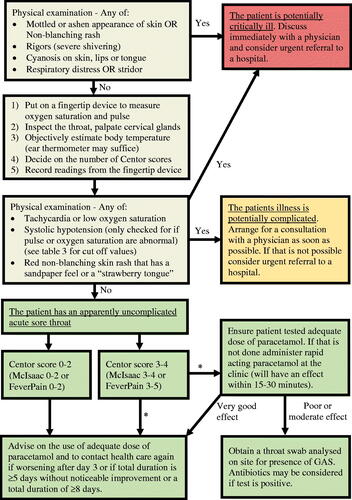Figures & data
Table 1. Probability that a potentially pathogenic bacteria detected in someone with a sore throat is linked to the symptoms.
Table 2. Scoring algorithms predicting the presence of beta-haemolytic Streptococcus (BHS) in patients with an acute sore throat.
Table 3. Levels of acute risk for suppurative complications and sepsis in patients attending with a sore throat.
Table 4. Classification of patients attending with an acute sore throat.


